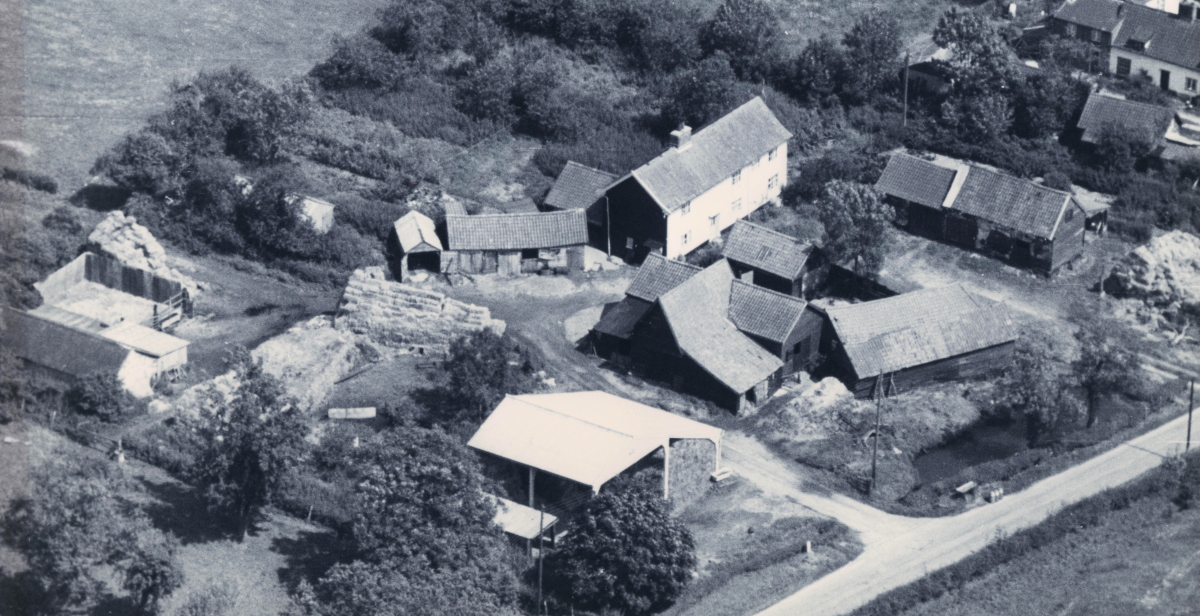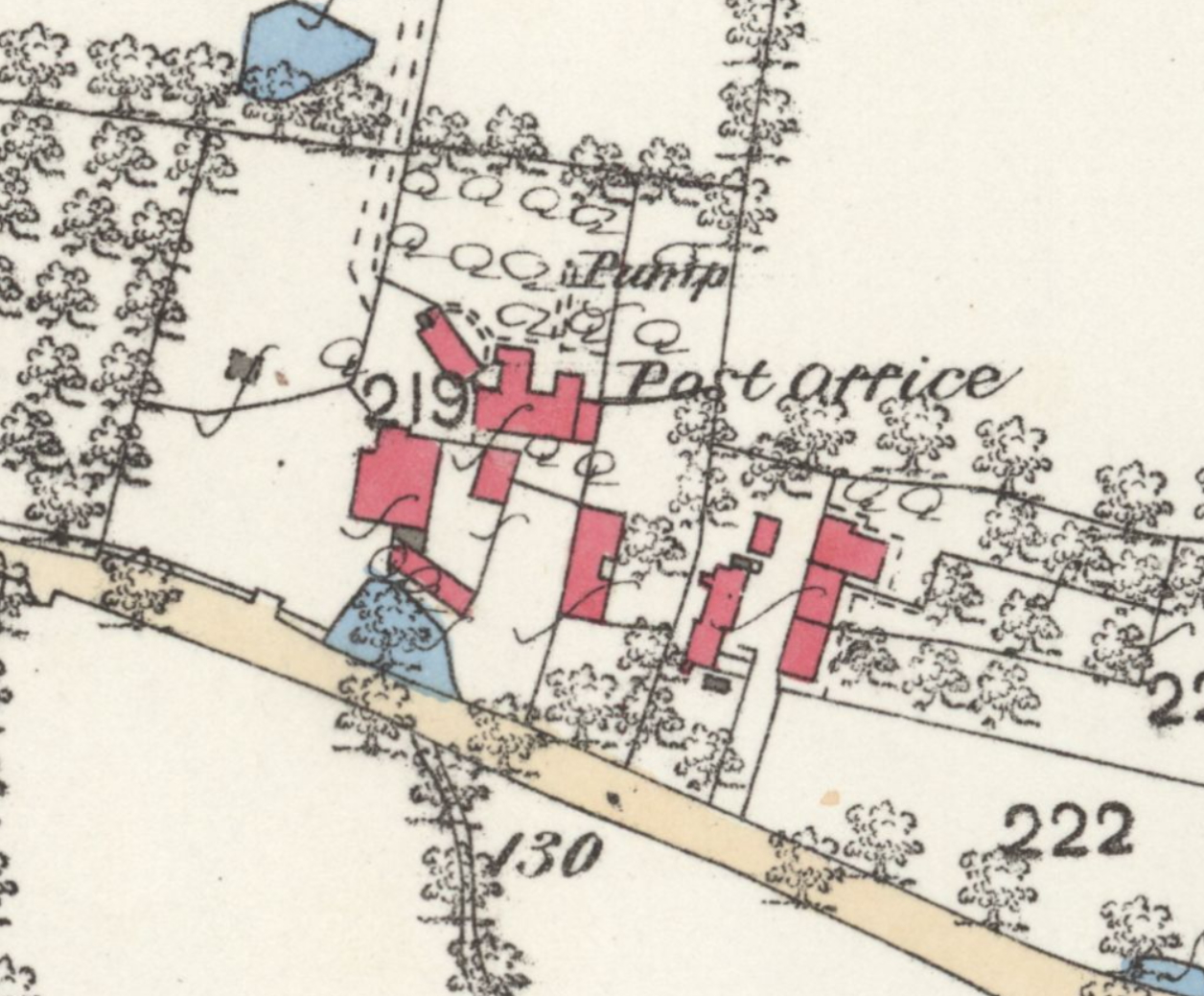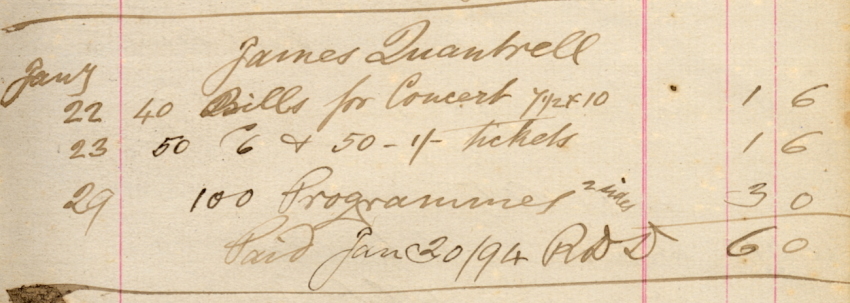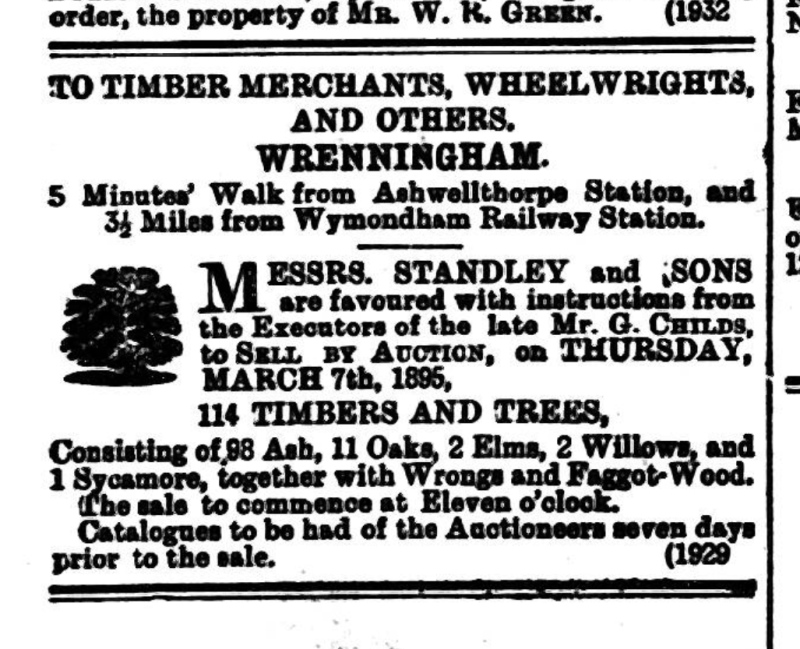
In the first half of the 1800s, the farm was in the tenancy of George Childs. It had been owned by the Burton family and, in her Will (1870), Maria Burton gifted this farm property to George. George Childs is understood to have been a close advisor to Maria Burton after she took over the running of Burton’s farm following the death of her brother.
In 1833, Alfred Quantrell had married George’s daughter, Lucy, and they all lived at the farm. In due course, Lucy and Alfred’s family lived there, too.
Alfred’s own career included the occupations of farmer, carpenter, builder, wheelwright and postmaster. He ran the village post office (marked on the 1882 OS map extract) from the farm between 1877 and 1885 having taken over the role from the senior Robert Day.

Alfred Quantrell acquired Samuel Day’s carpentry and wheelwright business, in Ashwellthorpe Road, following the Samuel Day’s loan default problem being addressed in 1865. The Norfolk Record Office possess a ledger once belonging to Alfred Quantrell which records his many customer dealings around the village.
In the Queen Victoria Jubilee year (1887), Alfred Quantrell had used the farm for a fund raising concert. A few years later (1894) his son, James, also appears to be organising a concert. As young James is still in his late teens, this event might also have been at the farm. James paid R D Day six shillings to print 40 bills (fliers), 100 tickets and 100 programmes.

The family was musical. In 1883 “Miss Quantrell” was presented with a “valuable album” as a token of her efforts in church for both the choir and playing the harmonium. She wasn’t alone; Emma Upcher was also a proficient harmonium player.
John Bullimore was one of the executors to George Childs’ Will after his death in 1889 in which Lucy inherited the farm. From various documents seen it appears that George had the resources available to make investments outside Wreningham and had became very wealthy.
The executors (including John Bullimore) of George Childs’ estate had placed an advertisement in a local paper to sell his “114 timbers and trees”. The advertisement spells out the types of wood. Trees were often a valuable part of any farm estate.
As was often the case, in this period, it is interesting to note the reference to the close proximity of Ashwellthorpe Station: being “5 minutes walk” away; probably important for both getting to the auction and/or removing the timber.

© The British Library Board. All rights reserved. With thanks to the British Newspaper Archive
In 1890, Annie Quantrell married William Bothway who was the eldest son of Henry Bothway.
After Alfred Quantrell’s death, in 1904, the 1911 Census suggests that Lucy was still living at the farm – perhaps until her death in 1912.
Later Peartree Farm occupants included Edith and Albert Bush between 1916 and 1937. Percy and Doris Coleman are remembered for producing and delivering the village’s milk during their tenure in the period from 1941 to 1960.
At the end of the 1900s, part of the farmland was sold for housing developments. The old farmhouse, having stood empty for a number of years, became a private home.
